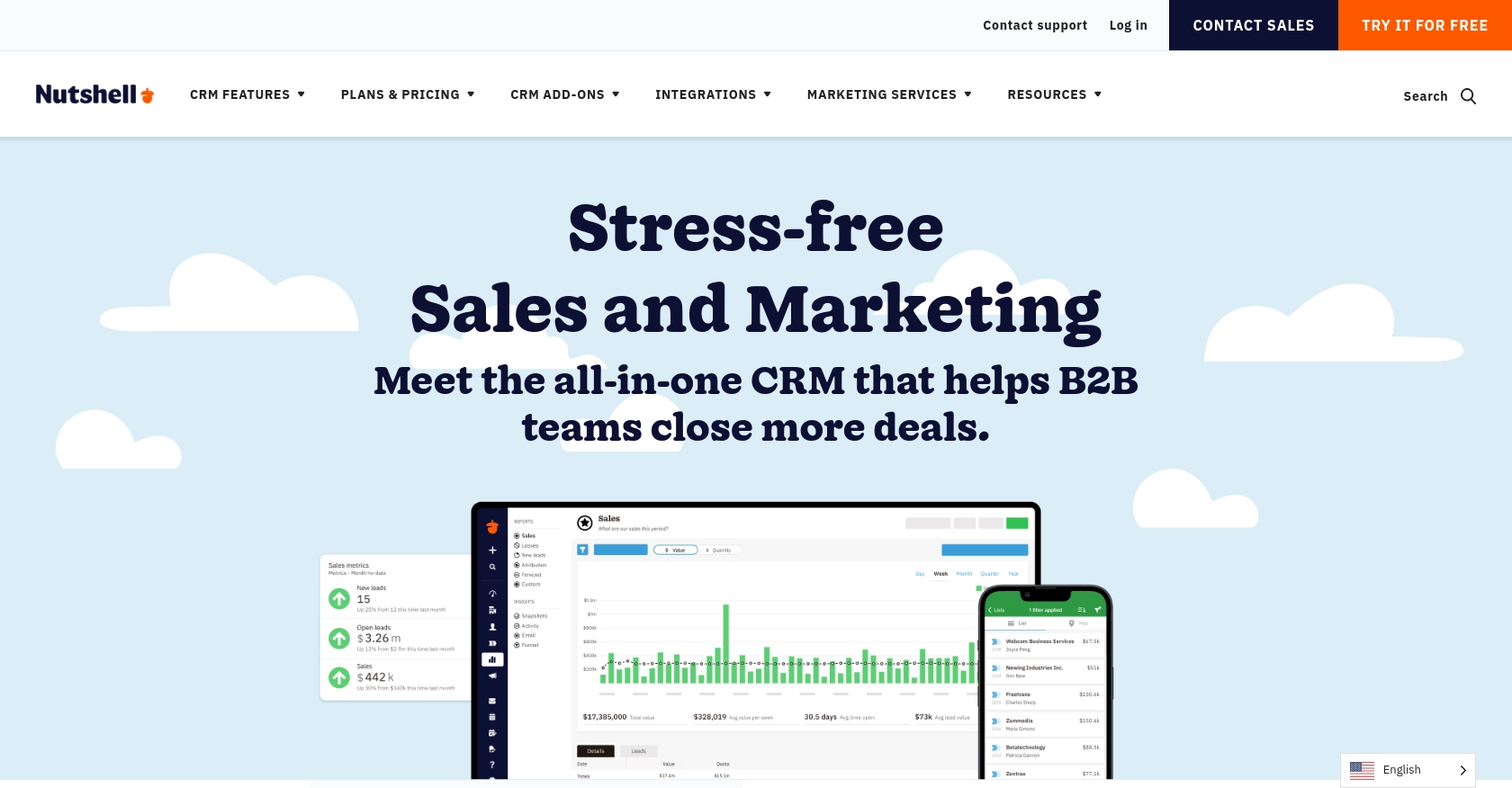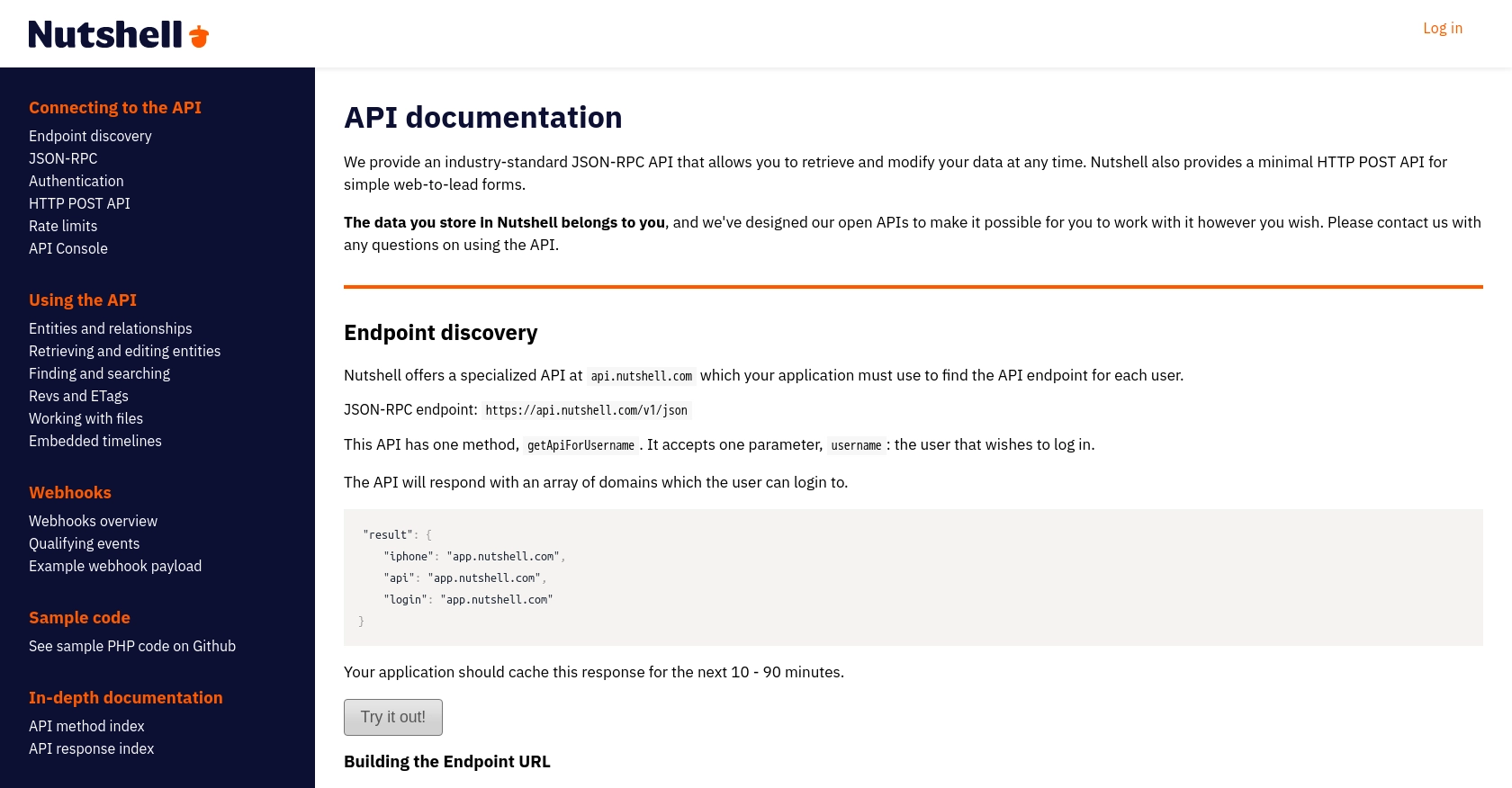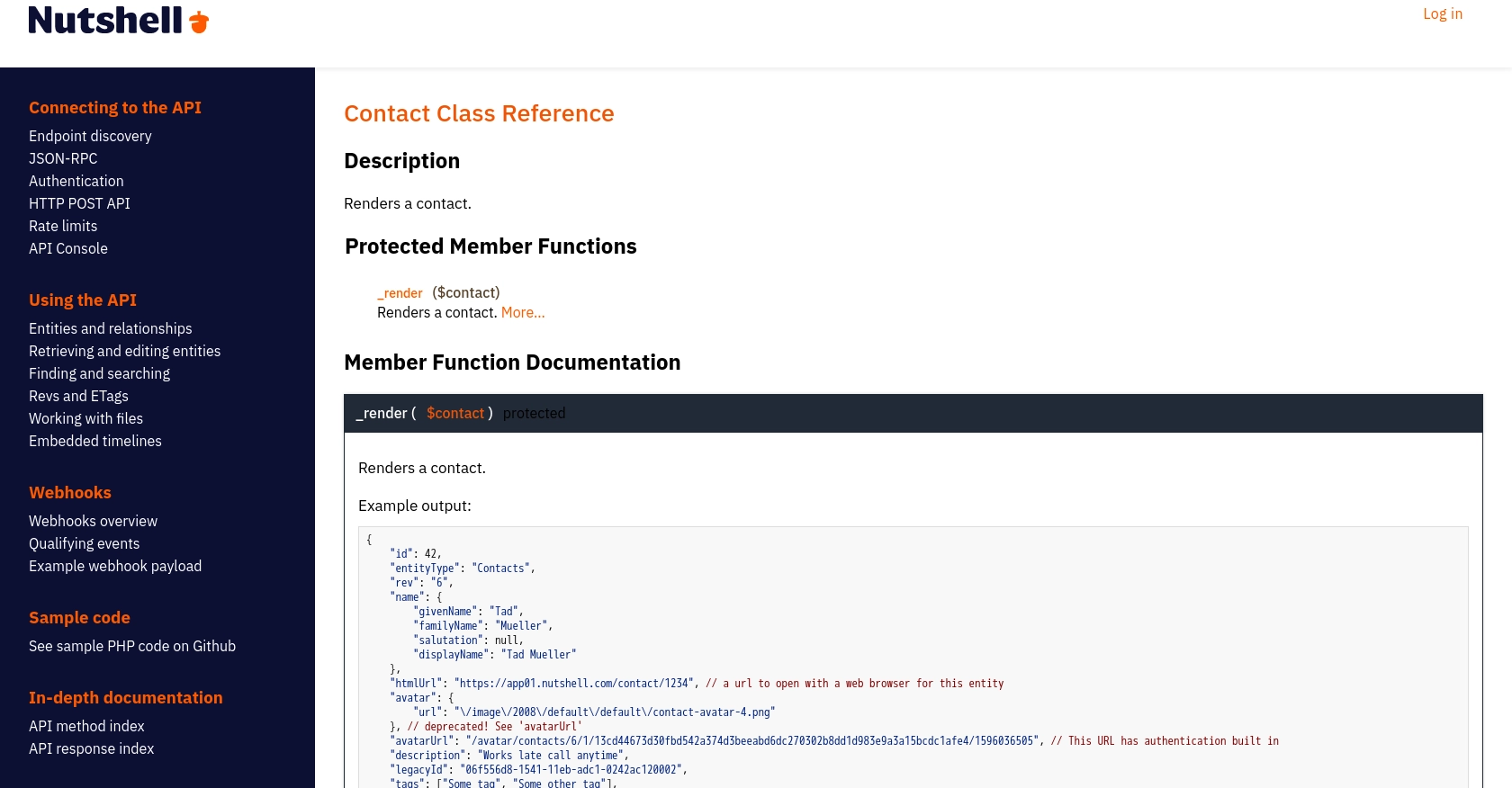Using the Nutshell API to Get Contacts (with PHP examples)

Introduction to Nutshell CRM
Nutshell is a powerful CRM platform designed to help businesses manage their sales processes efficiently. With features like contact management, lead tracking, and sales automation, Nutshell provides a comprehensive solution for sales teams looking to streamline their workflows and improve customer relationships.
Integrating with the Nutshell API allows developers to access and manipulate customer data, such as contacts, directly from their applications. For example, a developer might use the Nutshell API to retrieve contact information and synchronize it with another system, ensuring that customer data is always up-to-date across platforms.
Setting Up Your Nutshell Test Account for API Integration
Before diving into the Nutshell API, it's essential to set up a test account to safely experiment with API calls without affecting live data. This section will guide you through creating a sandbox environment and obtaining the necessary credentials for API access.
Creating a Nutshell Account
If you don't already have a Nutshell account, you can sign up for a free trial on the Nutshell website. Follow the instructions to create your account, which will serve as your sandbox environment for testing API interactions.
Generating an API Key for Authentication
The Nutshell API uses HTTP Basic authentication, requiring a username and an API key as the password. Follow these steps to generate your API key:
- Log in to your Nutshell account.
- Navigate to the "Setup" tab in the top navigation bar.
- Select "API" from the sidebar menu.
- Click on "Create New API Key" and fill in the required details.
- Ensure that the API key has the necessary permissions for accessing contacts.
- Save the generated API key securely, as it will be used in your API requests.
Understanding Authentication with Nutshell API
To authenticate your API requests, you'll use HTTP Basic authentication. The username can be your company's domain or a specific user's email address, while the password is the API key you generated. Here's an example of how to structure your authentication:
$credentials = base64_encode("your_username:your_api_key");
$headers = [
"Authorization: Basic $credentials",
"Content-Type: application/json"
];
Replace your_username with your domain or email and your_api_key with the API key you generated.
Testing Your API Setup
With your test account and API key ready, you can now proceed to test API calls. Ensure that your setup is correct by making a simple API request to retrieve contacts. This will confirm that your authentication is working as expected.
For more detailed information on authentication and endpoint discovery, refer to the Nutshell API documentation.

sbb-itb-96038d7
Making API Calls to Retrieve Contacts from Nutshell Using PHP
Setting Up Your PHP Environment for Nutshell API Integration
To interact with the Nutshell API using PHP, ensure you have PHP installed on your system. This guide assumes you are using PHP 7.4 or later. Additionally, you'll need the cURL extension enabled to make HTTP requests.
Installing Necessary PHP Dependencies for Nutshell API
Before proceeding, verify that the cURL extension is enabled in your PHP configuration. You can check this by running the following command:
php -m | grep curlIf cURL is not listed, enable it in your php.ini file and restart your web server.
Writing PHP Code to Retrieve Contacts from Nutshell API
Now that your environment is ready, you can write a PHP script to retrieve contacts from the Nutshell API. The following example demonstrates how to make a request using HTTP Basic authentication:
'findContacts',
'params' => [
'orderBy' => 'id',
'orderDirection' => 'ASC',
'limit' => 10,
'page' => 1
],
'id' => 1
];
// Initialize cURL session
$ch = curl_init($url);
// Set cURL options
curl_setopt($ch, CURLOPT_RETURNTRANSFER, true);
curl_setopt($ch, CURLOPT_HTTPHEADER, [
"Authorization: Basic $credentials",
"Content-Type: application/json"
]);
curl_setopt($ch, CURLOPT_POST, true);
curl_setopt($ch, CURLOPT_POSTFIELDS, json_encode($data));
// Execute cURL request
$response = curl_exec($ch);
// Close cURL session
curl_close($ch);
// Decode and display the response
$responseData = json_decode($response, true);
print_r($responseData);
?>
Replace your_username and your_api_key with your actual Nutshell credentials. This script sends a JSON-RPC request to retrieve a list of contacts, sorted by ID in ascending order, with a limit of 10 contacts per page.
Understanding the Response from Nutshell API
The response from the Nutshell API will be a JSON object containing the contact data. You can verify the success of your request by checking the response structure. If successful, the response will include an array of contact objects with details such as name, email, and phone number.
Handling Errors and Troubleshooting API Requests
If your request fails, the Nutshell API will return an error code and message. Common error codes include:
- 401 Unauthorized: Check your authentication credentials.
- 400 Bad Request: Verify the structure of your JSON-RPC request.
For more detailed error handling, refer to the Nutshell API documentation.
Verifying API Call Success in Nutshell Test Account
After executing the script, log in to your Nutshell test account to verify that the contacts retrieved match the data in your account. This confirms that your API integration is functioning correctly.

Best Practices for Nutshell API Integration and Error Handling
When working with the Nutshell API, it's crucial to follow best practices to ensure a smooth integration process and maintain data integrity. Here are some key recommendations:
- Securely Store Credentials: Always store your API credentials securely. Avoid hardcoding them in your source code. Use environment variables or secure vaults to manage sensitive information.
- Handle Rate Limiting: Be aware of Nutshell's rate limits to avoid exceeding them and causing disruptions. Implement exponential backoff strategies to handle rate limit responses gracefully.
- Standardize Data Fields: Ensure that data fields retrieved from Nutshell are standardized and transformed as needed to match your application's data model.
- Implement Robust Error Handling: Use try-catch blocks to handle exceptions and log errors for troubleshooting. Always check for HTTP status codes and error messages in API responses.
Leveraging Endgrate for Efficient Nutshell API Integrations
Integrating with multiple APIs can be time-consuming and complex. Endgrate simplifies this process by providing a unified API endpoint that connects to various platforms, including Nutshell. By using Endgrate, you can:
- Save Time and Resources: Focus on your core product development while Endgrate handles the intricacies of API integrations.
- Build Once, Use Everywhere: Develop a single integration for each use case and apply it across multiple platforms, reducing redundancy.
- Enhance Customer Experience: Offer your customers a seamless and intuitive integration experience with minimal effort.
Explore how Endgrate can streamline your integration processes by visiting Endgrate's website.
Read More
Ready to get started?
